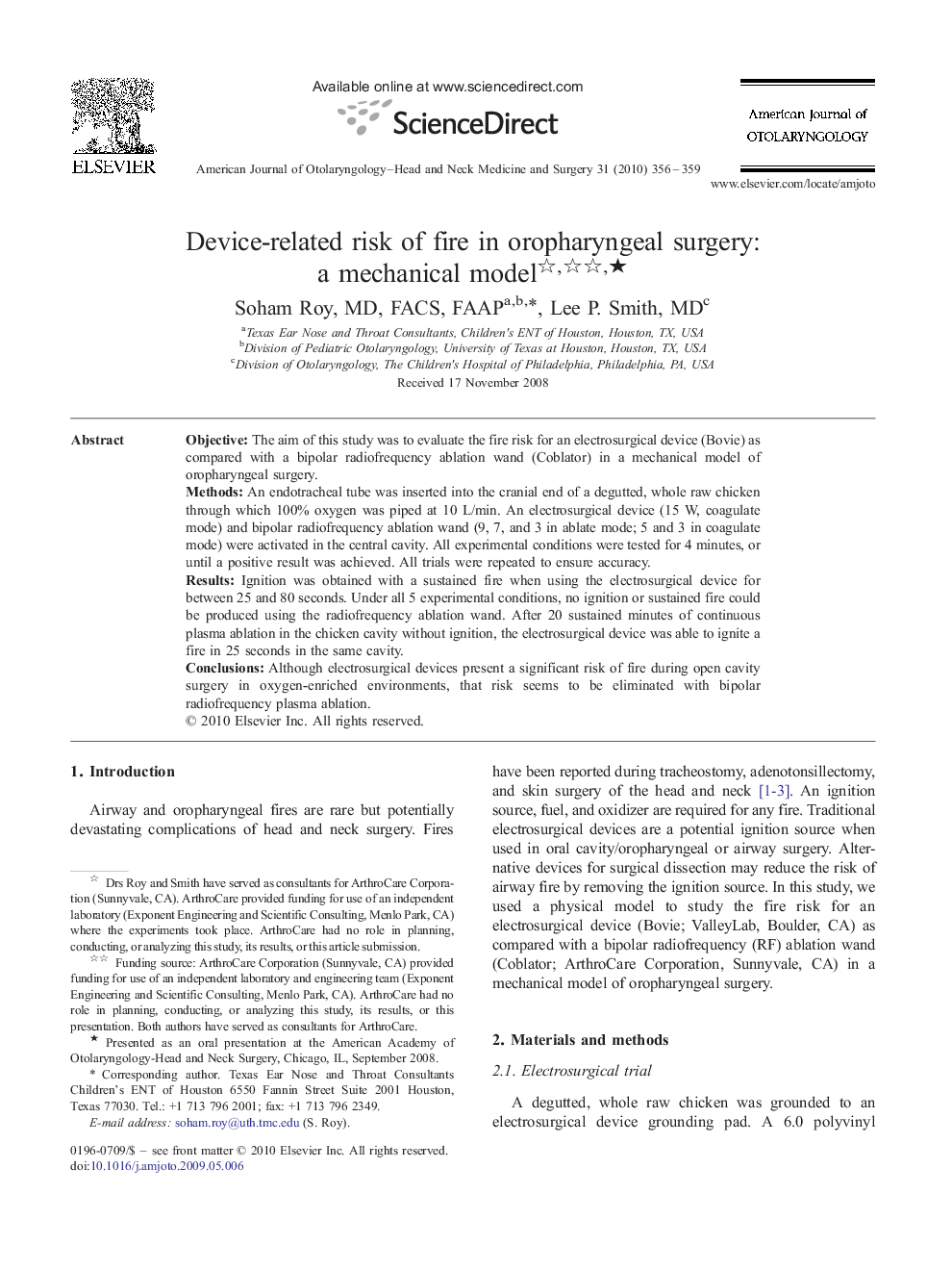| Article ID | Journal | Published Year | Pages | File Type |
|---|---|---|---|---|
| 4103988 | American Journal of Otolaryngology | 2010 | 4 Pages |
ObjectiveThe aim of this study was to evaluate the fire risk for an electrosurgical device (Bovie) as compared with a bipolar radiofrequency ablation wand (Coblator) in a mechanical model of oropharyngeal surgery.MethodsAn endotracheal tube was inserted into the cranial end of a degutted, whole raw chicken through which 100% oxygen was piped at 10 L/min. An electrosurgical device (15 W, coagulate mode) and bipolar radiofrequency ablation wand (9, 7, and 3 in ablate mode; 5 and 3 in coagulate mode) were activated in the central cavity. All experimental conditions were tested for 4 minutes, or until a positive result was achieved. All trials were repeated to ensure accuracy.ResultsIgnition was obtained with a sustained fire when using the electrosurgical device for between 25 and 80 seconds. Under all 5 experimental conditions, no ignition or sustained fire could be produced using the radiofrequency ablation wand. After 20 sustained minutes of continuous plasma ablation in the chicken cavity without ignition, the electrosurgical device was able to ignite a fire in 25 seconds in the same cavity.ConclusionsAlthough electrosurgical devices present a significant risk of fire during open cavity surgery in oxygen-enriched environments, that risk seems to be eliminated with bipolar radiofrequency plasma ablation.
